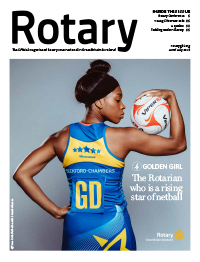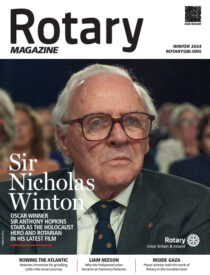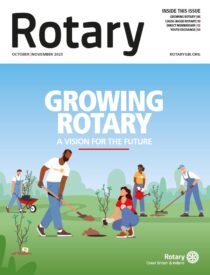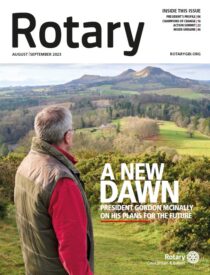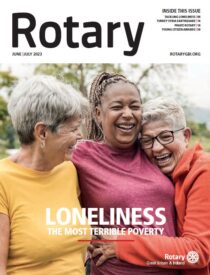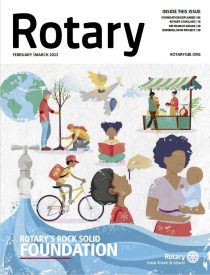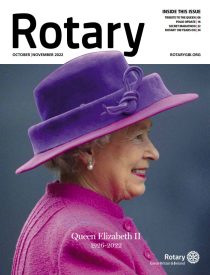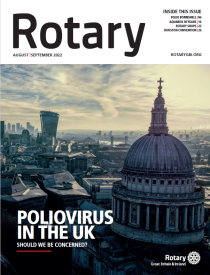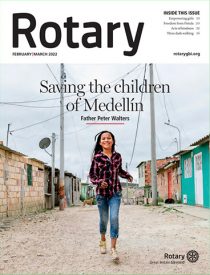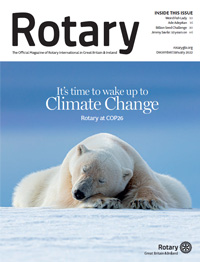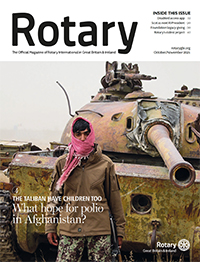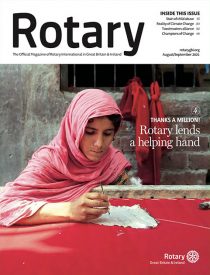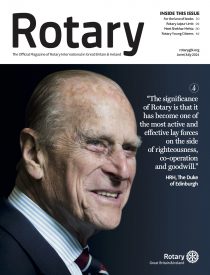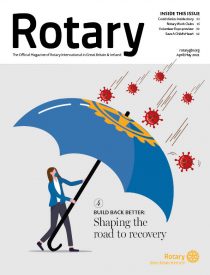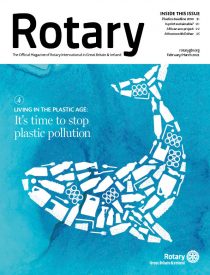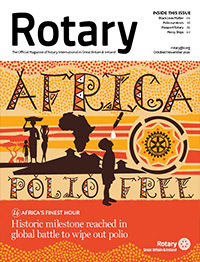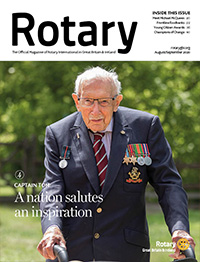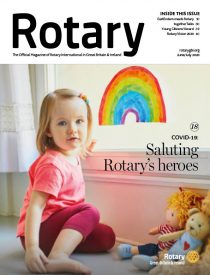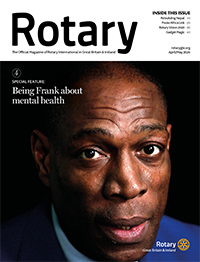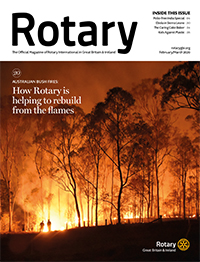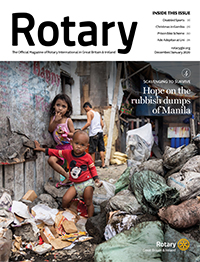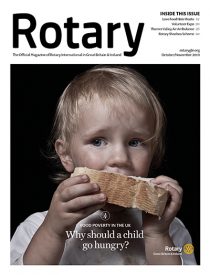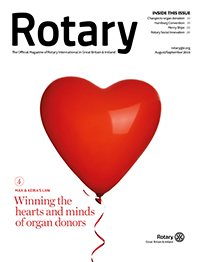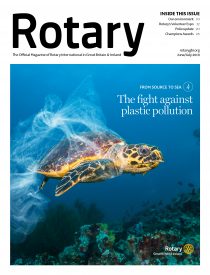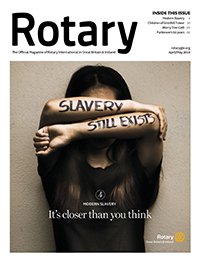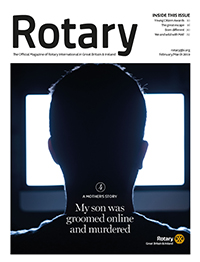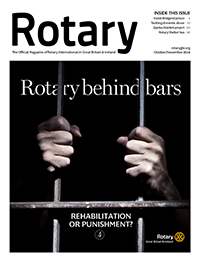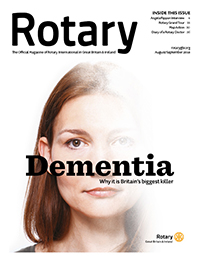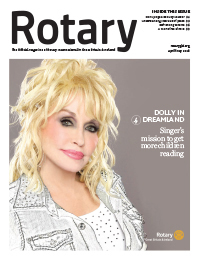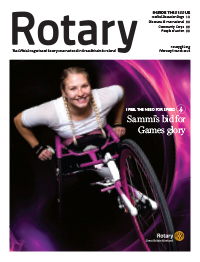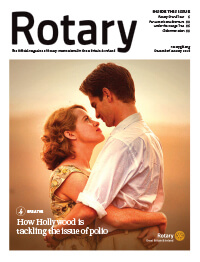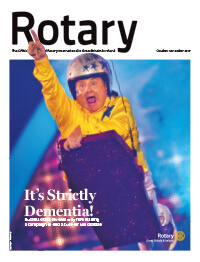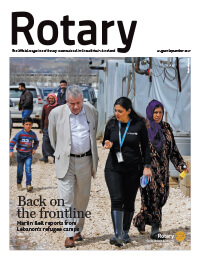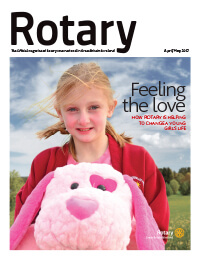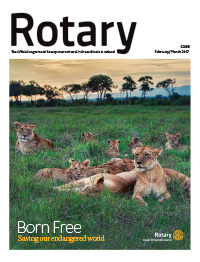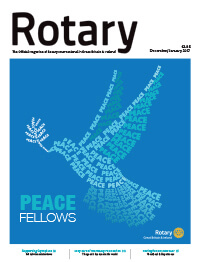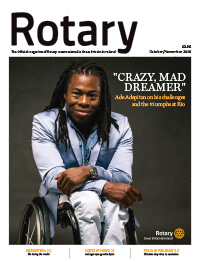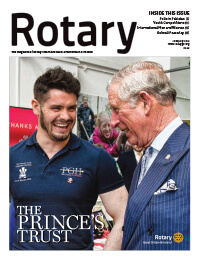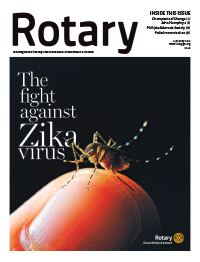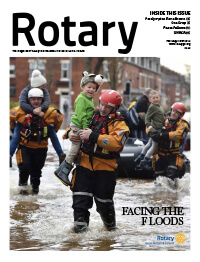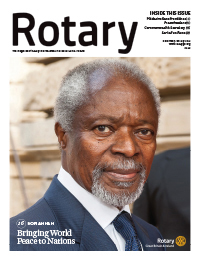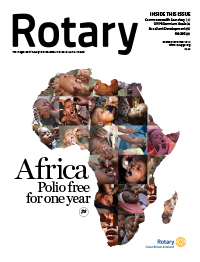Sunday morning, and upstairs at a coffee shop, a bustling group of people arrive, some carrying babies while others are accompanied by small children wearing t-shirts saying “Future Rotarians at Work” – the fortnightly get-together of Maidenhead Bridge Rotary is about to begin.
Club President, Michael Atherton, starts off by inducting two new members and presenting them with their Rotary-branded coffee mugs and Rotary pins. The club has nearly 50 members and its numbers are growing.
Michael tells me: “We don’t have a meal, it’s a casual coffee club meeting. We are working Rotarians and we are out there in the community working, rather than sitting in a meeting.”
This is just one of the new-style Rotary clubs I have visited filming videos for a public awareness campaign to highlight their activities as part of the Rotary2 initiative. They bust any myth that Rotary isn’t attractive to younger people, and the enthusiasm and buzz of these clubs is infectious!
Maidenhead Bridge Rotary started five years ago as a group of former Rotaractors who’d reached the age of 30.
Founding President, Lisa Hunter, says that as lunchtime and evening Rotary meetings didn’t fit in with their busy work and family lifestyles, they decided to do something different.
She adds: “We think it’s important that children come along and, particularly as a parent, for them to learn that they should be giving back to their community to help make a difference.”
Lisa says the club’s focus is on being part of the community. ”We decided to launch something called ‘Pimp My Community’ which is working with charities that are very small and perhaps just starting up.
“So we meet with them, find out what they need and give three free hours of our professional time to really crack on and get their charity going and in the right direction.”
This club embodies much of what the Rotary2 campaign is all about – actively promoting the development of more vibrant, diverse, innovative, family-friendly, flexible clubs/groups, creating 250 new Rotary opportunities across Britain and Ireland.
Travelling across Britain and Ireland, I have found a growing number of these new-style clubs out there.
Sitting in the pub hotel where the Rotary Club of Wrexham Glyndwr meets in Wales, Fiona Bassett, their dynamic president enthusiastically describes her new-style club.
“We don’t have a meal. We meet on a fortnightly basis.
“We have got businessmen and women, but we’ve got single mums, we’ve got stay-at-home mums, we’ve got retired people, we’ve got people from all walks of life and from all over really,” she says.
“We’ve got people from Poland, we’ve got people from Rwanda, who now live in the UK. We’ve got such a diverse club and all ages, our youngest is 22 and our oldest is 78. So yes, I think we’re quite different.
“We’re a very enthusiastic bunch. We’re so driven.”
Wrexham Glyndwr started as a satellite club and within six months chartered as a Rotary club as did the new-style Rotary Club of Marlow Bridge in Buckinghamshire, which also meets fortnightly in a local pub and doesn’t have a meal.
Marlow Bridge was started as a satellite club by the two local established Rotary clubs of Marlow and Marlow Thames, who thought there was room in the town for a group for younger, working Rotarians.
Louise Kelly, Founding President of Marlow Bridge, says: “We wanted to meet in a different format to the existing clubs that are already in the town and just bring something new and fresh to Rotary.
“We all lead very busy lives, so our meetings are after work and more informal than other clubs.
“So we started as a satellite club and then have become our own club, in our own right. The Marlow club and Marlow Thames club have really supported us and they’ve been the driving force behind the recruitment.
“The number of women we have in the club is about 50/50.
“The majority of us are of a younger age, but our average age is about 45. So we’re bringing lots of people in. I think, really, what the draw is the community side of it and the charity side of it.
“It’s less about the networking. A lot of people just want to give something back to the community that they live in.”
And this has proved a ‘win-win’ situation because not only is the Rotary Club of Marlow Bridge gaining members, but so are Marlow and Marlow Thames, as Rotary becomes more visible in the community.
Another club which started off as a satellite is the Rotary Club of Bentley Cheshire, the first corporate Rotary club in Britain and Ireland as many of the members work for Bentley Motors.
The club is making a big difference to its community by launching a new initiative locally to feed the hungry and the homeless.
First, they set up a Street Kitchen on Fridays in Crewe town centre to provide hot drinks and food to the town’s homeless as well as those struggling to feed themselves.
They are now running this in a community centre, providing warm clothing, sleeping bags, duvets and blankets.
Club Secretary Sarah Newcombe says: “The Rotary Club of Bentley Cheshire has been the catalyst and raised the profile of the homeless situation locally and we are really making a difference here.”
To help Rotary continue to make a difference, Rotary2 provides opportunities for Rotary to grow and be relevant to today’s world.
The clubs I visited show how Rotary is attractive to younger, working people and by providing opportunities for more such clubs to flourish in the future is a step forward.








